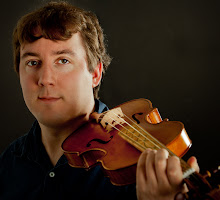The third in a series of posts that discuss the general principles important to those in the world of Early Music.
3. The adoption of original performing forces
There is arguably nothing in the world of historically informed performance that has had such a dramatically audible effect on the sound of familiar music than the return to historically appropriate performing forces. This idea almost always involves a reduction of forces, tying in with the overall tendency of the early music movement to strip away the Romantic excesses of traditional performance. It's the same tendency that has seen continuous vibrato vacuumed out of string players' fingers, the sustained sound of legato replaced with a more articulate musical language, and powerful modern instruments pushed aside to reveal the (relatively) more intimate and subtle versions of the past. In short, the turn towards historical performing forces is one of the most significant aspects of the overall quest to downsize modern performance.
Within the traditional Classical repertoire the sacred music of Johann Sebastian Bach stands at the centre of the action. The Passions, the B minor Mass, the oratorios, the cantatas ... before the HIPsters got their hands on this repertoire, this music was being happily performed by choral societies, large orchestras and renowned soloists. All was going swimmingly, until American scholar Joshua Rifkin came forward in 1981, arguing that in Bach's time, this cherished repertoire was likely to have been intended for and performed by no more than one voice per part (OVPP as it is now termed) along with an equally small number of instrumentalists. The immediate reaction from most other scholars and musicians was "What rubbish!" Arguments began to rage within scholarly music journals and the musical results of performances that tested Rifkin's idea were mocked, with the term 'B minor madrigal' being used as an instant put-down to the whole concept of OVPP. Now, though, the evidence is considered compelling and more and more groups are producing wonderful performances of this repertoire in its 'small-scale' state.
While Rifkin is remembered for bringing the issue to the wider musical community, he was not the first to complain about the typically inflated Bach performances of the twentieth century. As far back as 1915, French composer Camille Saint-Saëns wrote about the St Matthew Passion in The Musical Times:
"...let me point out the mistake that is made in giving this 'Passion' on a grand scale with large masses of choral and instrumental executants. One is deceived by its character, by its double choir and orchestra, and forgets that it was destined for the little church of St. Thomas ... certainly, therefore, these two orchestras and choirs reduce themselves to a fairly small number of executants."
Saint-Saëns! ... the composer of the massive organ symphony that was used so triumphantly in the movie Babe! ... calling out for a drastic reduction in performing forces ... in 1915!
Bach's sacred music, while arguably the most radically changed by the adoption of historical performing forces, is of course only one specific example. An effect has also been seen on Classical symphonies such as those of Mozart and Haydn, which are far less often performed by full symphony orchestras than they used to be. When they are, the back few stands of each string section generally gets chopped in order to reduce the number of players and achieve a better balance of strings to winds.
Paring back performing forces to their original sizes has many wonderful and positive effects, especially when combined with other factors of performance practice such as the use of original instruments and performance techniques. For one, a more natural balance can be achieved, with sensitive wind instruments such as the traverso now audible. A sense of chamber music also returns to many familiar pieces that were typically considered grand and spectacular. And music can become more vivid and flamboyant through consideration of historical instrumental forces; this is particularly true for continuo players in the wealth of Baroque sonata repertoire. Sonatas by the likes of Handel, Corelli, Locatelli, Veracini etc that would typically be accompanied by the piano in a traditional modern performance can now become much more colourful with a continuo group whose instrumental options may include harpsichord, organ, baroque cello, gamba, lute and theorbo. Different options are appropriate to different repertoire of course, but the variety is there to be used. The rise of the baroque continuo group is perhaps the only example of upsizing in performance practice.
As with the use of original instruments and manuscript scores, exploring performing forces in their original state gives us a chance to hear the music in completely different clothing. If we can get past the often disconcerting realisation that familiar music is perhaps not what we once thought it was, the new approach can ideally reveal new beauties and aesthetic pleasures we had never thought existed.



No comments:
Post a Comment